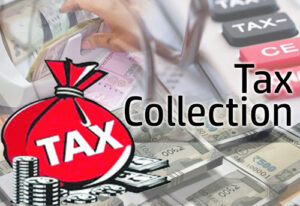 Centre had collected ₹3.82 trillion in net direct taxes in the comparable period of last financial year.
Centre had collected ₹3.82 trillion in net direct taxes in the comparable period of last financial year.
The Central government has so far this year collected ₹4.62 trillion in direct taxes after adjusting for refunds, marking a 20.99% growth annually, the Central Board of Direct Taxes (CBDT) said on Tuesday quoting provisional figures.
This includes corporate taxes of ₹1.8 trillion and personal income tax of ₹2.81 trillion. The personal income tax figure includes proceeds from securities transaction tax (STT).
The Centre had collected Rs. 3.82 trillion in net direct taxes in the comparable period of the last financial year.
The latest figures include the first instalment of advance tax collections, for which the due date was 15 June.
The government has in the interim budget for FY25 projected a revenue of ₹10.4 trillion from corporate tax and a revenue of ₹11.56 trillion from personal income tax.
The projected growth rate for both direct and indirect tax is 13%, faster than the 10.5% nominal gross domestic product (GDP) growth projection made in the budget.
The forecast implies buoyant direct tax collection growth this year. The 21% growth rate seen in the first two months also implies the government may comfortably meet the projected tax collection target.
It remains to be seen if the finance ministry will make adjustments to the target when it presents the full year budget for FY25 next month.
The total direct tax collection of the Centre before adjusting for refunds stood at Rs. 5.16 trillion so far this year, compared to Rs. 4.22 trillion in the corresponding period of the preceding financial year, showing an annual growth of 22.19%, CBDT said.
Before adjusting for refunds, corporate tax collection stood at ₹2.26 trillion and personal income tax receipt including STT collection stood at ₹2.89 trillion. Personal income tax collection of the Centre has in the last two years grown faster than corporate tax collection on account of a host of reasons including rising income levels, higher use of technology by the government and taxing dividends in the hands of the individual taxpayer instead of the corporate entity.
Data showed that tax collected at source (TDS) is a significant mode of tax collection for the government, which helps in overseeing the financial transactions taking place in the economy and encourages voluntary compliance.
TDS fetched ₹3.25 trillion to the exchequer so far this financial year, while advance tax contributed ₹1.49 trillion. Self assessment tax contributed Rs. 28,471 crore while regular assessment fetched Rs. 10,920 crore.
Advance tax collection after the first instalment due date shows a growth of 27.34% from the year ago period, when the department collected Rs. 1.17 trillion. The tax department gave Rs. 53,322 crore as refund so far this financial year, 33.7% more than the refunds issued in the same time a year ago.
Experts said increased formalization, use of technology and strong economic growth are contributing to direct tax buoyancy. It can also be attributed to an increasing number of scrutiny cases, a sharp focus on advance tax collection and faceless assessments, according to Manish Garg, lead-transfer pricing and litigation at AKM Global, a tax and consulting firm.
“Also, the scope of TDS and tax collected at source (TCS) is being extended gradually by the government to include transactions such as purchase of luxury cars, foreign remittances and large cash withdrawal etc., which has contributed to the boost in direct tax collections,” said Garg.
Source: https://www.livemint.com/news/india/centres-net-direct-tax-collection-grows-21-so-far-in-fy25-11718721977676.html
© 2018 CA Chandan Agarwal. All rights reserved.